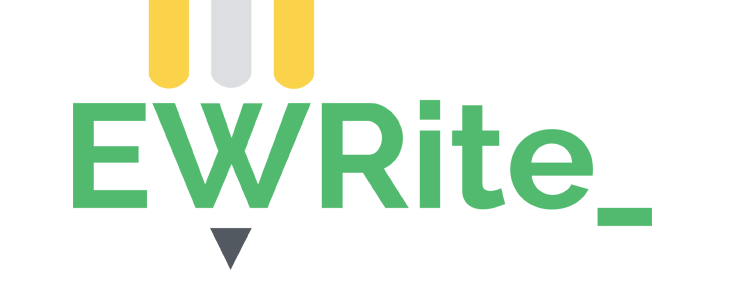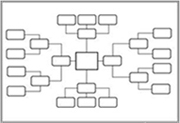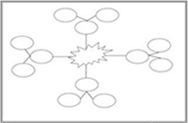
The Writing Requirement Package | The Reading Requirement Package
| > | Introduction | |
Pedagogical approaches to writing | Motives for writing
II. Writing Pedagogical approaches to writing In discussions of developing students' writing competence in academic settings, a rather controversial issue has been which pedagogical approach should be adopted: writing as a process or writing as a product. In fact, many educationalists do make a sharp and clear distinction between the two approaches as any decisions made may imply completely different teaching and learning frameworks targeting learners' various learning and developmental needs, and hence, leading to totally different assessment rationales and focuses. Writing as a process The construct, writing as a process, is used to describe a perspective about writing in which writing is seen as a complex process of decision-making and activities responding to a particular objective or purpose. Writing, in this respect, is regarded as an expression of the mental process it entails and as a means of communication and interaction, between the writer, the text and the audience. This perspective also implies understanding writing as a series of drafts and considering the endeavor of writing in its entirety. The process includes several stages, they are, as conceptualized by Learning Media, Ministry of Education (1992)1, forming intentions, composing and drafting, correcting and publishing, and, outcomes. 1 Learning Media, Ministry of Education. (1992). Dancing with the pen: the learner as a writer. Wellington, NZ: Learning Media, Ministry of Education.
Stage 1 – Forming intentions
Stage 2 – Composing and drafting
Stage 3 – Correcting and publishing
Stage 4 – Outcomes
Writing to learn It is generally believed that students' thought and understanding can grow and clarify through the process of writing. The importance of writing as a way of learning has also been pinpointed in the 1986 report to the UNC Faculty Council4 by the Ad Hoc Committee on Writing Across the Curriculum as follows, "writing is at the heart of the educational process. The complex process of writing compels us to analyze, to organize, and to articulate, to think logically and clearly and to come to a better understanding of our subject through an attempt to explain or present it. Not only does practice in writing improve the precision of our manner of expression, but the process of writing can lead to an increased precision in our ideas and concepts. … The Committee regards this as an extremely important point: writing in courses in all disciplines has as its primary goal not the improvement of writing per se, but rather the improvement of the learning process." Regarding the notion of writing to learn, though there is a general lack of empirical backing in the field, Newell (1984)5 did identify three measures of learning, namely, recall, concept application, and reception of passage-specific knowledge for better conceptualization of the construct of learning and further examination of the named notion, writing to learn. Briefly speaking, he discovered that essay writing was more effective in enabling students to produce consistently more abstract sets of associations for key concepts when compared to other types of writing like note taking and responses to short questions. 4 Ad Hoc Committee on Writing Across the Curriculum, UNC. (1986). 1986 report to the UNC Faculty Council. University of North Carolina. In spite of the types of learning highlighted by Newell (1984), it is also unanimously agreed that writing does play a cardinal role in facilitating students' learning from helping students examine and evaluate information presented in the texts, connect and integrate what they have leant with the rest of their knowledge, beliefs, experiences, thoughts and feelings, to constructing new knowledge and they are all considered to be of great significant value to students' intellectual development not only in the arena of writing. To summarise, writing helps promote students' learning, as well as their involvement in the course materials through writing. Writing provides students with a platform to:
With the course focuses and objectives taken into consideration, CAR teachers could adopt, with modifications if necessary, any of the writing tasks listed in the section to facilitate students' learning throughout the course. Writing to think "How do I know what I think until I see what I say?" (E.M. Foster) In a similar vein, due to the intellectual and cognitive load demanded for accomplishing writing tasks, writing does not merely serve as a tool for improving writing competence, but also a device to sharpen one's thinking and reasoning skills. Thinking, as conceptualized by Griffith (1982)6, is a sort of inward activity of mind that enables people to make connections between:
6 Griffith, M. (1982). Writing to think. National writing project occasional paper no. 4. Washington: California University. With the help of writing, students manage to bridge their inner speech with the outer reality together through which a number of thinking processes are made possible or even lively. Besides, writing also allows students to bring vague, disorganized but new perceptions within themselves to a verbal level, which is explicit enough for them to reconsider, further explore, evaluate, modify or extend. Only after going through this ‘essential" stage of the learning process can they expect clearer patterns to emerge and hence possible permanent grasp of new and unfamiliar knowledge can then be achieved. Writing to think has been validated by cognitive psychologists and it is clearly stated in the Ad Hoc Committee on Writing Across Curriculum's 1986 report to the UNC Council that, "the writing process regularly involves the types of cognition generally labeled ‘thinking': discrimination, classification, specification, generalization, hypothesis formation and testing. In many cases, writing is not merely an aid to thinking: writing is thinking." In view of all these, in order to achieve deeper level learning and thinking, it might be worthwhile for teachers to consider assigning writing tasks to students in their courses. Other motives for writing In addition to learning and thinking, writing can also be employed to achieve a plethora of purposes and some of them are listed below:
The list above can never be exhaustive as writing has a huge potential in achieving both intra-personal and inter-personal communication, literally, in all circumstances. The kinds of writing tasks to be adopted in classes are primarily determined by the learning outcomes or goals intended for the courses, as well as the course planning and delivery of individual teachers. |
| > | Writing | ||
| > | Engaging students in writing | ||
| > | Assessment | ||
| > | Templates for writing activities | ||
| |
|
||
| |
|
||
| |
|
||
| |
|
||
| |
|
||
| |
|
About this website
EWRite is an open access online literacy platform for PolyU community that has two major objectives:
- to support PolyU students’ literacy development within and across the disciplines
- to support subject and language teachers to implement system-level measures for integrating literacy-sensitive pedagogies across the university
This platform provides access to generic genre guides representing typical university assignments as well as links to subjects offered by faculties with specific disciplinary genres and relevant support materials.
The materials can be retrieved by students by choosing the genres that interest them on the landing page. Each set of materials includes a genre guide, genre video, and a genre checklist. The genre guide and video are to summarize the genres in two different ways (i.e. textual and dynamic) to fit different learning styles. The genre checklist is for students to self-regulate their writing process. The genre guide and checklist include links to various ELC resources that can provide further explanation to language items (e.g. hedging and academic vocabulary).
The platform also acts as a one-stop-shop for writing resources for students, language teachers and subject leaders. Information about the English Writing Requirement policy can also be found on this platform. There are training materials for new colleagues joining the EWR Liaison Team.





